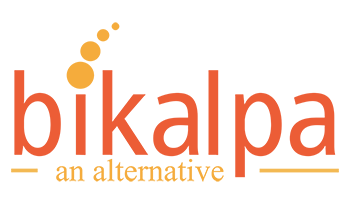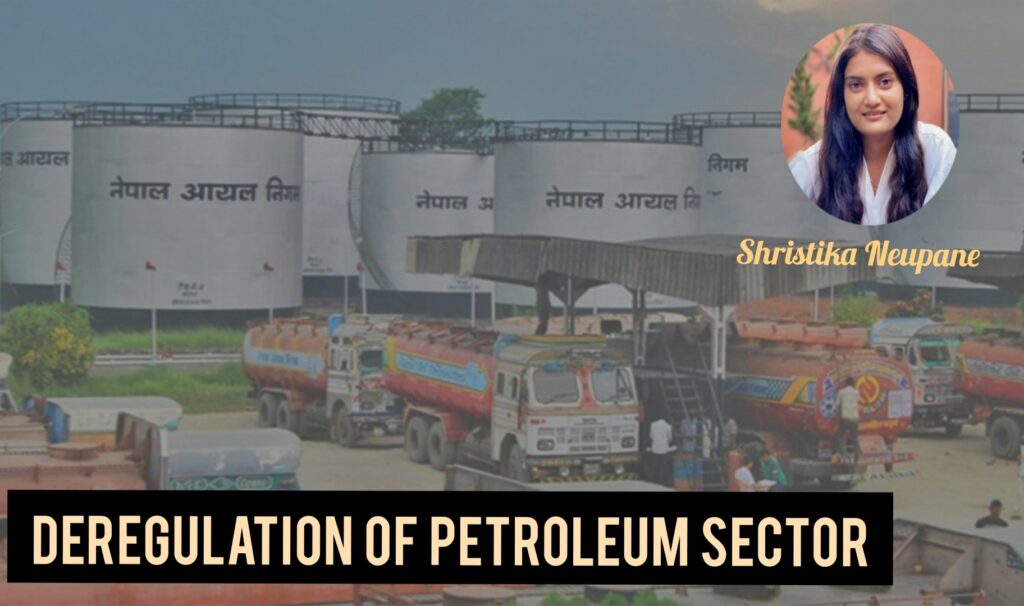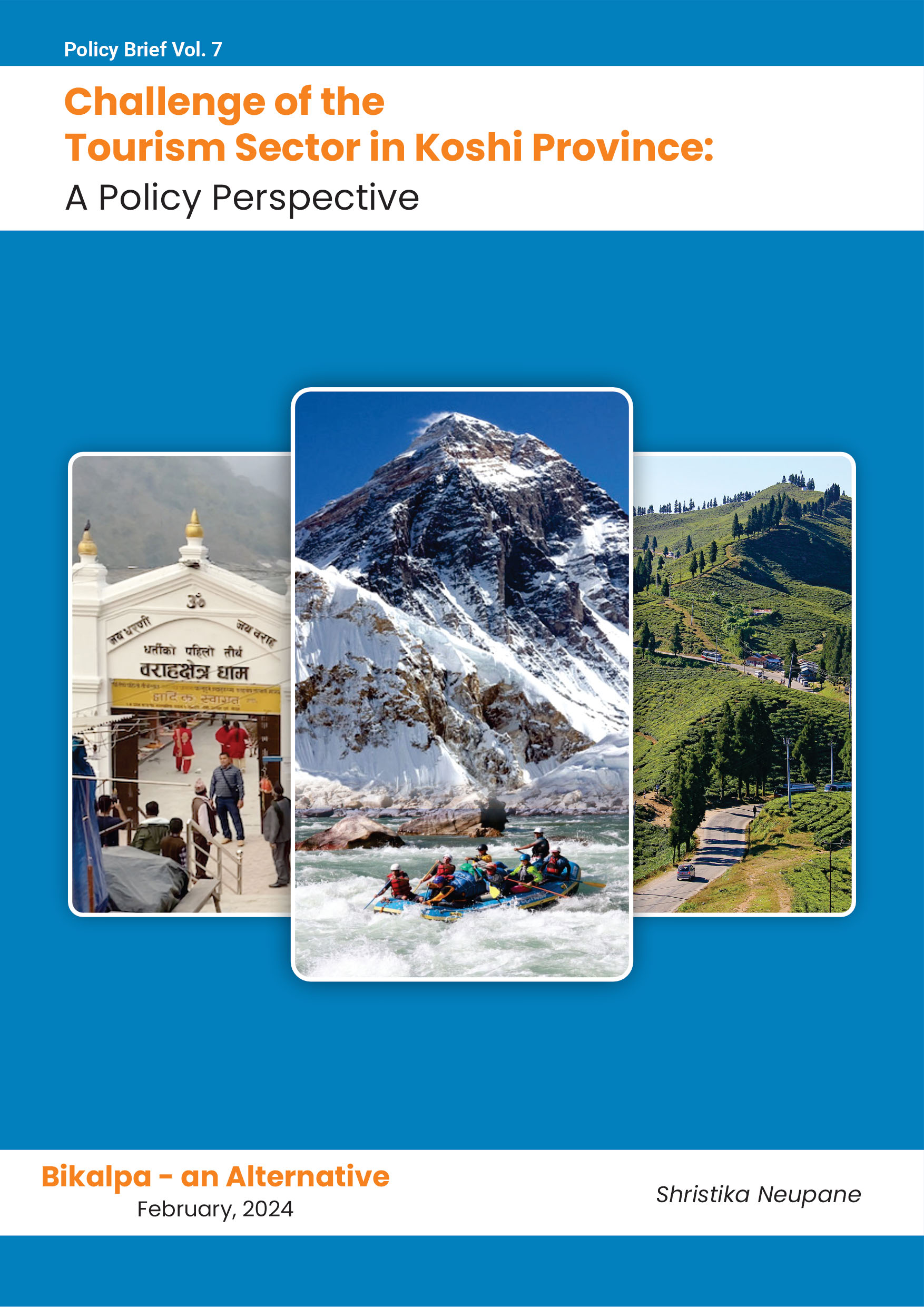A poor tea-seller swirling a gallon of tea in his mud-made hut sells tea for Rs15. He is still reimbursing the loan he took to make ends meet during the pandemic. Will anyone go to his stall if he charges Rs 20 for a cup of tea because of the rise in LPG (Liquefied Petroleum Gas) prices? Probably not.
The skyrocketing price of petroleum products is one of the burning issues in Nepal. As of 2020/2021, the price of petrol has been hiked 15 times. NOC (Nepal Oil Corporation), the state-owned petroleum supplier that maintains a monopoly in the sector, has designated the price of petrol and diesel at 136 per litre and 119 per litre, respectively.
The price hike has a significant impact on the livelihood of Nepalis. The foremost impact will be felt by those who have their own means of transportation through a steep increment in their monthly expenditure on fuel. They will even be willing to cut down their average monthly fuel consumption to lessen the monthly spending. The price hike leads to an unavoidable upsurge in the fare of public transports that serves the public. The price of aviation fuel (domestic) has also been increased by Rs 5, now costing Rs 101 per litre. Domestic airlines have jacked up the fuel surcharge in response to the aviation fuel price hike. This will affect travel and tourism industries, resulting in fares mounting up.
Furthermore, the surging price has a cascading effect as well. With the more expensive transportation service, corporations engaged in transporting essential goods and commodities are also anticipated to raise their service rates. The cost of goods is likely to elevate further as most products and goods consumers use daily are transported from various parts of the country.
Facets responsible for the Price surge
- International Market
There has been a surge in crude oil prices in the international market immediately after the peak of the covid-19 crisis in the world. The price of Brent crude was $42.5 per barrel a year ago, but now, it has reached $74.60 this week. It is double compared to the price a year ago.
- Demand and Supply
The price hike can also be illustrated through the perspective of the “Demand and supply” theory. Due to the pandemic, the oil-producing economies decreased their production. After the pandemic, the high demand for petroleum products from countries such as China, India, South Korea, and Japan led to a surge in oil prices. According to the Organization of the Petroleum Exporting Countries (OPEC), the average consumption in 2020 was 90.63 million barrels per day, which in 2021 is 96.58 million per barrel. In 2020, International Energy Agency (IEA) predicted that the demand would surpass the pre-pandemic demand.
- Exorbitant taxes
Meanwhile, the government has been collecting revenue, categorised under a myriad of different headings. Headings include Development of Petroleum Infrastructure, Pollution Control, Road Maintenance, and Stabilising Fuel Prices, etc. This has forced consumers to pay exorbitant prices on petroleum products. Nonetheless, the revenue collected has been appropriately utilised or not is never transparent. Even after levying taxes on the public, who are coerced to pay high prices, the corporation is still running at a loss.
- Monopoly
One-sided anti-competitive practices distress the Nepalese petroleum sector. Nepal signed a “Memorandum of Understanding (MoU) with India in 1974, which aimed to import, store and distribute petroleum products all over Nepal. Likewise, on September 29, 2014, automatic pricing was introduced in order to adjust the price of petroleum products every fortnight. Even though NOC has been assuring that increasing fuel price is administered through automatic fuel pricing mechanisms, but this mechanism is often forgotten when fuel prices drop in the global market. The government-owned trading enterprises blocked the competition and liberalisation of the petroleum market. The absence of reforms and political interventions has generated inefficiency in the corporation, and there is no one to take responsibility for any blunders. There is inadequacy in supplying sufficient oil in the market when demand is heightened. This inefficient market chain is transmitted into the market players and ultimately shifted to consumers in the form of undue financial burden.
The Possible Way Forward
It is impossible to have control over the international factors responsible for the price hike. Nonetheless, the government can undo the domestic factors that are blameworthy for rising prices. Its high time that private sectors tap into the competitive market and put an end to the monopoly of NOC. It is vital to protect consumer rights and ensure a fair and competitive market environment in this sector. The service standard shall improve as soon as there is competition. The Ministry of Commerce formulated a new bill in parliament for the liberalisation of petroleum sectors in 2010. However, this new law was never prioritised due to unstable government and frequent changes in the policy.
The government should deregulate the sector by setting an independent authority to watch over the petroleum sectors and market operations. Deregulation in the petroleum sector can be explained as removing restrictions by the government and increasing competition, thereby decreasing the cost of petrol for consumers. It is evident that deregulation increases innovation as firms develop innovative ideas and policies to thrive in the competitive market and encourage new investors to venture into the industry, satisfying the rising demand.
Henceforth, price deregulation, modernisation, lower taxes, institutional reforms, and overall liberalisation of the petroleum sector are crucial needs to ensure efficiency and protect consumers’ rights in the petroleum sector of Nepal.











